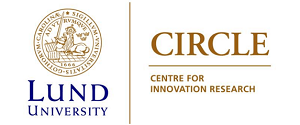No 2014/31: New Path Development in the Periphery
Arne Isaksen () and Michaela Trippl ()
Additional contact information
Arne Isaksen: Department of Working Life and Innovation, University of Agder, Norway
Michaela Trippl: Center for Innovation and Research and Competence in the Learning Economy (CIRCLE), Lund University, Sweden
Abstract: This paper seeks to enhance our understanding of critical preconditions and factors that facilitate the rise and development of new industrial paths in peripheral regional economies. Current conceptualizations of regional path creation are largely based on experiences from core regions and fail to provide satisfactory theoretical explanations of new path development in peripheral regions. Applying a knowledge base approach, we advance the argument that path creation in the periphery can follow either an analytic or a synthetic route. We highlight that new path development is linked to an increase of knowledge variety through the combination of knowledge from outside and inside the region. The paper contains an analysis of the emergence and evolution of new industries in two peripheral regions in Norway and Austria: the electronics and software industry in Arendal-Grimstad in the South-Eastern part of Norway, and the software industry in Mühlviertel in Upper Austria. The two industries have developed differently; through the 'synthetic route' based on the emergence and restructuring of manufacturing firms in Arendal-Grimstad, and through the 'analytical route' building on the establishment of research facilities in Mühlviertel. However, similar factors, such as exogenous development impulses through the inflow of new analytical and synthetic knowledge, the presence of key actors of change, and building of supportive institutional structures are found to be vital in sparking the formation of new industrial paths in both regions. The two cases, however, differed in their further evolution, as they showed varying capacities to successfully combine the newly emerging knowledge base with the existing one. The findings clearly challenge uniform, narrowly conceptualized models of endogenous industrial evolution and highlight the advantages of applying a theoretical framework that takes not only endogenous but also exogenous sources of path creation and its relation to combinations of knowledge bases into account.
Keywords: Peripheral regions; new path creation; knowledge bases
37 pages, December 15, 2014
Full text files
201431_Isaksen_Trippl.pdf
Questions (including download problems) about the papers in this series should be directed to Torben Schubert ()
Report other problems with accessing this service to Sune Karlsson ().
RePEc:hhs:lucirc:2014_031This page generated on 2024-09-13 22:16:05.

